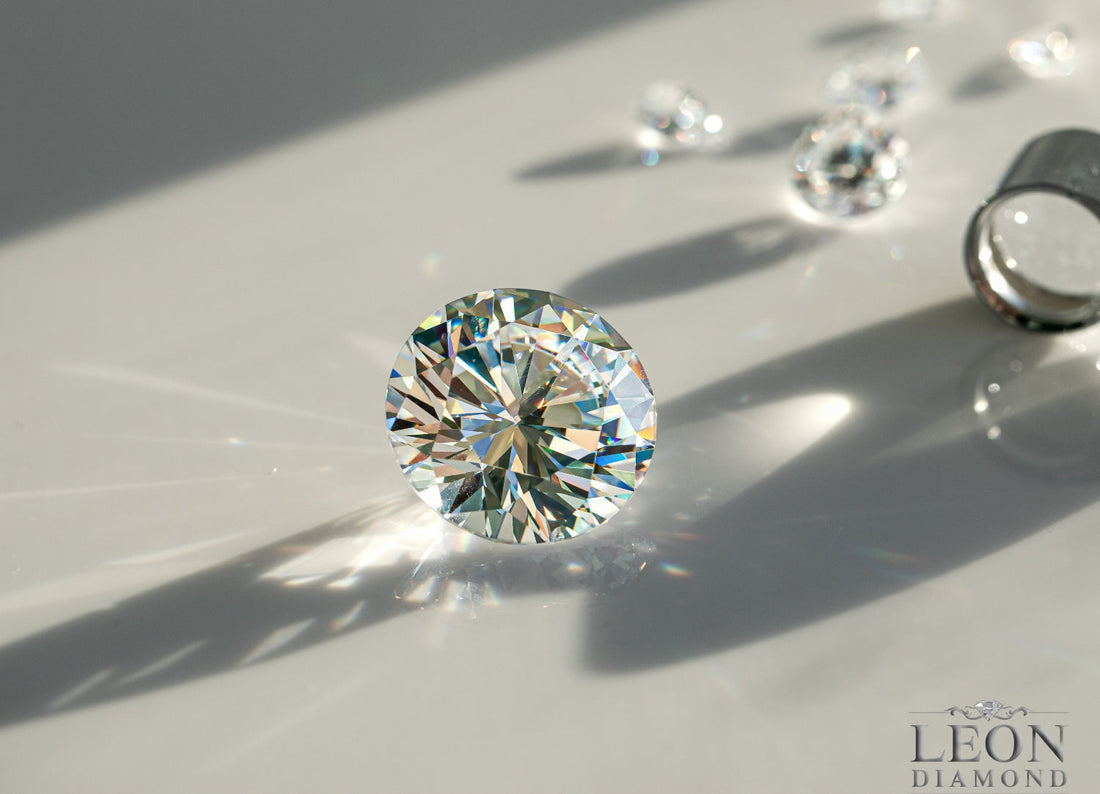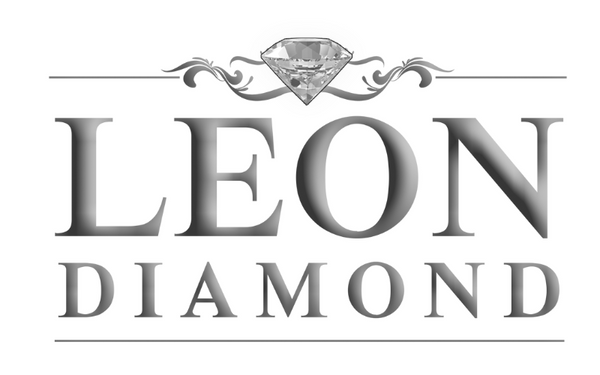
The Role of Light in Enhancing Diamond Brilliance
Share
A diamond's beauty is often defined by its sparkle, but what truly creates that sparkle is the way light interacts with the stone. Brilliance, the bright return of white light from the diamond, is what gives it its signature radiance. Together with fire (colored flashes) and scintillation (sparkle when moving), brilliance is the key to a diamond's allure.
According to the Gemological Institute of America (GIA), brilliance is primarily determined by the quality of a diamond's cut, which dictates how light is reflected and refracted within the stone. This means that even a large diamond can appear lifeless if it isn't cut correctly.
In this guide, we'll explain how light enhances diamond brilliance, why cut quality matters, and what to look for when choosing a diamond that truly shines.
What Is Diamond Brilliance?
Diamond brilliance refers to the white light reflected back to the eye from both the surface and the internal facets of a diamond. It is one of the three essential components of a diamond's light performance, along with fire and scintillation:
- Brilliance: The bright return of white light, which creates a diamond's lively sparkle.
- Fire: The dispersion of light into rainbow-like flashes of color.
- Scintillation: The sparkle or pattern of flashes seen as the diamond, viewer, or light source moves.
The International Gemological Institute (IGI) highlights that brilliance is directly linked to the precision of a diamond's cut. Proportions such as table size, crown angle, and pavilion depth control how light is returned, and even small variations can reduce brightness.
Scientific optics research also shows that brilliance occurs because of total internal reflection, when light entering the diamond is refracted and reflected back through the crown rather than escaping through the sides. This principle explains why cut quality is more important than carat weight in determining sparkle.
A diamond with intense brilliance will appear radiant and eye-catching, while one with poor brilliance can look dull, regardless of size.
How Light Interacts with a Diamond

When light enters a diamond, it bends (refraction), bounces around the internal facets (reflection), and exits through the crown.
- Entry, Reflection, and Refraction: Light must enter at the right angles to maximize brightness.
- Critical Angles: If cut too shallow, light leaks through the bottom; if cut too deep, light escapes through the sides.
- Symmetry and Facet Alignment: Precise facet angles ensure light is returned to the viewer's eye rather than being lost.
The Role of Cut in Maximizing Brilliance
Of all the diamond 4Cs, cut quality has the greatest influence on brilliance. Cut determines how efficiently light is reflected and refracted inside the diamond, which directly impacts its sparkle. Even diamonds with perfect clarity or high carat weight can appear lifeless if the cut is poor.
1. Proportions That Maximize Light Return
Diamonds graded as Excellent or Ideal cut follow precise proportions of crown angle, pavilion depth, table size, and symmetry. These proportions are designed to optimize light return so that the majority of light entering the diamond reflects to the eye instead of leaking out.
2. How Shallow or Deep Cuts Affect Brilliance
- Shallow Cut: Appears wider across the surface but causes light to leak through the bottom, reducing brilliance.
- Deep Cut: Retains weight in the pavilion, but much of the light escapes through the sides, making the diamond appear smaller and darker.
3. Why Certification Matters
Independent grading laboratories such as GIA and IGI evaluate cut quality using standardized criteria, including symmetry, polish, and light performance.
Their certification gives buyers confidence that a diamond labeled Excellent or Ideal has been measured against strict, research-based standards.
Diamond Shape and Light Performance
Different diamond shapes handle light differently.
- Round Brilliant: Known for delivering maximum brilliance due to its symmetrical 58-facet cut.
- Fancy Shapes: Ovals, pears, cushions, and marquises can appear larger per carat but may show "bow-tie" effects if not cut well.
- Emerald and Asscher: Step-cut stones showcase clarity and elegance but reflect less light, resulting in a more subtle brilliance.
How the Environment Affects Brilliance
Even the best-cut diamond looks different depending on the light and setting.
1. Natural Daylight vs Artificial Lighting
- Daylight: Balanced brilliance and fire.
- Spotlighting: Strong flashes of color, boosting fire and scintillation.
- Soft Indoor Light: Less sparkle, more subtle brightness.
2. Jewelry Settings
- Prongs (open): Allow maximum light entry, enhancing sparkle.
-
Bezels (closed): Limit light entry, reducing brilliance but offering a sleek look.
According to ScienceABC, a diamond sparkles due to the interplay of reflection, refraction, and dispersion, and these effects vary significantly depending on how and where the diamond is examined.
Leon Diamond's Commitment to Brilliance

At Leon Diamond, brilliance is at the heart of everything we create. Since 1975, we've specialized in precision cutting and in-house craftsmanship, ensuring every diamond, whether natural or lab-grown, meets the highest standards of light performance.
All of our diamonds are GIA or IGI certified, guaranteeing accurate grading of cut, clarity, color, and carat weight. This means every diamond in our collection is chosen not just for weight, but for the brilliance that brings it to life.
Choosing a Diamond That Truly Shines
A diamond's brilliance isn't determined by size or weight; it's the interaction of light, cut, and craftsmanship that makes it sparkle. Understanding how light enhances brilliance helps you choose a diamond that radiates beauty in every setting.
At Leon Diamond, we offer a curated selection of natural and lab-grown diamonds, cut to perfection to maximize sparkle and brilliance. Visit us to book a private appointment online to discover a diamond that truly shines for a lifetime.
Frequently Asked Questions
What causes a diamond to sparkle?
A diamond sparkles because light entering it is reflected and refracted through its facets, creating brilliance, fire, and scintillation.
Does carat size affect brilliance?
Not directly. Brilliance depends more on cut quality than size. A well-cut small diamond may outshine a larger, poorly cut one.
Do lab-grown diamonds have the same brilliance as natural diamonds?
Yes. Lab-grown diamonds share the same chemical and optical properties as mined diamonds, so they sparkle the same when cut to high standards.
Which diamond shape sparkles the most?
The round brilliant cut is designed to maximize brilliance, though other shapes can offer unique styles and light effects.
How can I make sure my diamond has good brilliance?
Look for GIA or IGI certification that grades the cut as Excellent or Ideal, and buy from jewelers who specialize in precision craftsmanship, like Leon Diamond.
